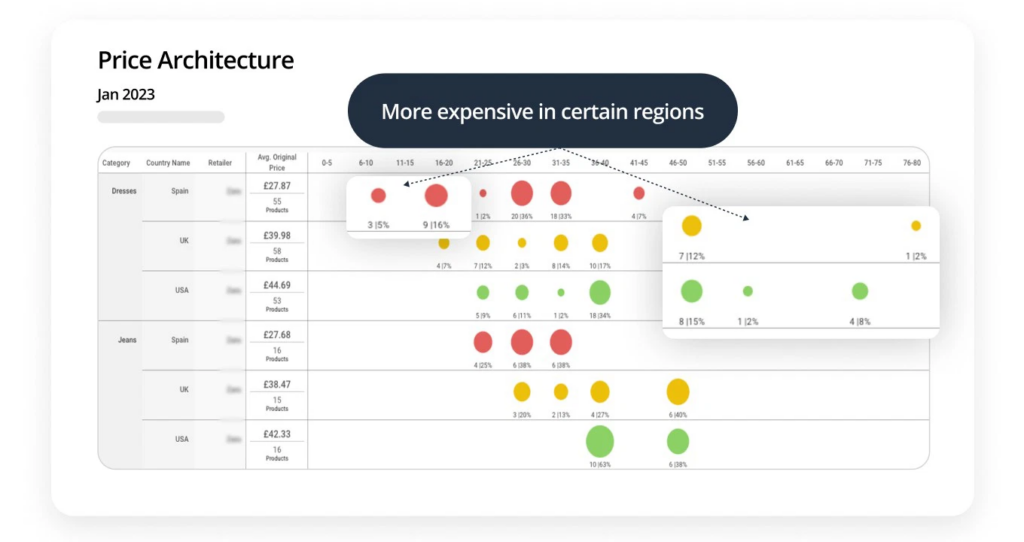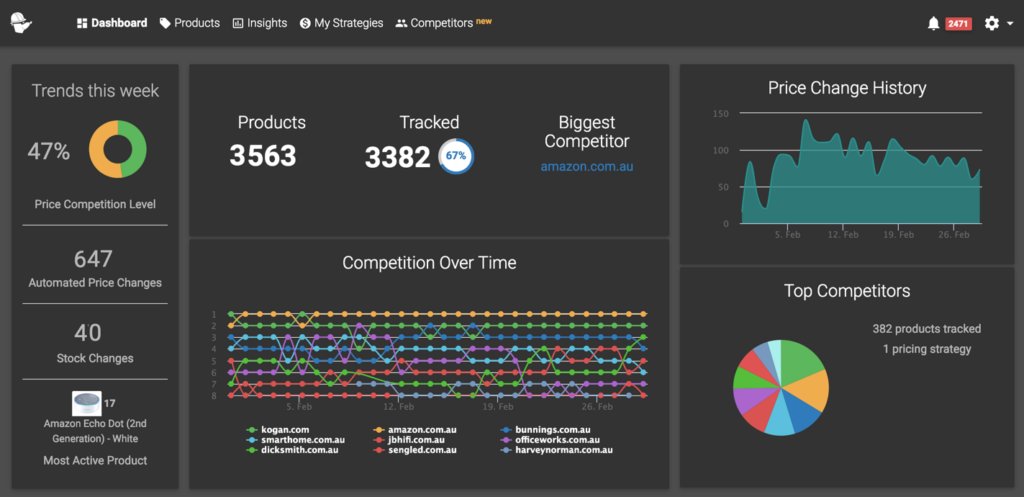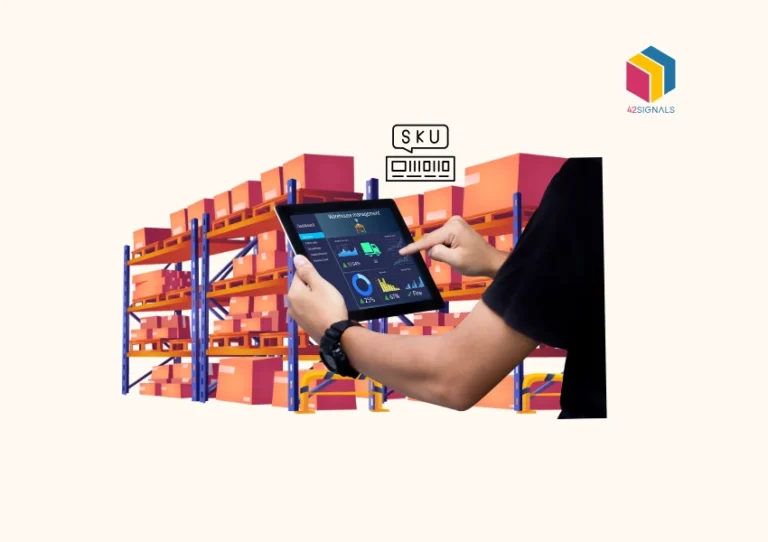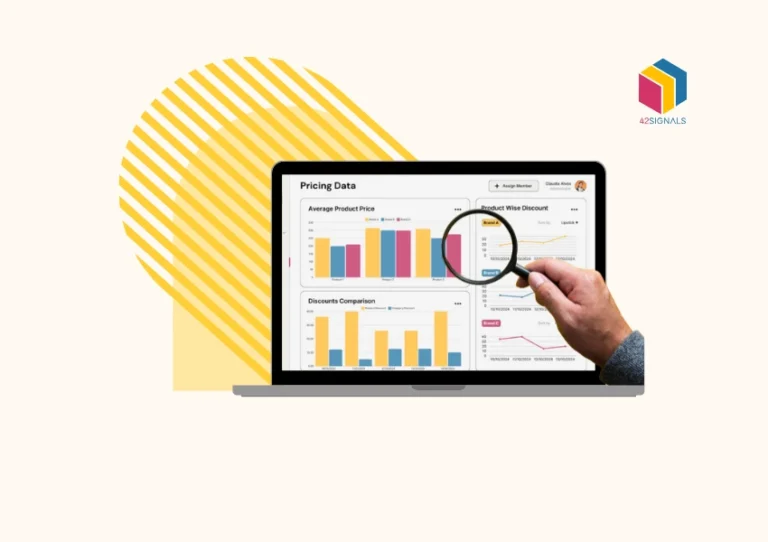What is Competitor Price Monitoring?
Deciphering competitor pricing involves analyzing and understanding the pricing strategies of competitors in a market. This process is crucial in the e-commerce sector, where fierce competition and consumer preferences constantly evolve. By monitoring competitor pricing, businesses can adapt their strategies to remain competitive and meet emerging market trends.

Image Source: Centric Software
What are the Benefits of Competitor Price Monitoring?
1. Informed Decision-Making
Understanding competitor pricing allows businesses to make informed decisions about their pricing strategies.
2. Market Positioning
It aids in determining a business’s position in the market relative to its competitors.
3. Strategic Adaptation
Insights gained can guide strategic decisions, such as adapting product offerings or enhancing customer experiences.
4. Opportunity Identification
Competitor pricing analysis can uncover gaps in the market, providing opportunities for businesses to differentiate their products or services.

Image Source: Competitor Price Tracking | 42Signals
A Few Examples of Competitor Price Monitoring
Online Fashion Retailer Changing Operations
An online fashion retailer, upon observing that its competitors were increasing their prices on certain products found the reason was due to the company adopting eco-friendly and sustainable materials. To remain competitive, the retailer revamped its product line to include garments made from organic, recycled, or biodegradable materials.
This strategic move not only aligned the retailer with market trends but also appealed to environmentally conscious consumers, enhancing the brand’s image as an eco-friendly option in the fashion industry. A great example of how competitor price monitoring helped the brand with their operations.

Image Source: PriceMole
Stationery Brand Including Luxurious Items
Similarly, a stationery company offering quality items in their monthly subscription boxes decided to increase prices to incorporate luxurious and international brands.
Observing this trend with competitor price monitoring, its competitor also decided to evaluate their offerings and provide a more enjoyable shopping experience with high-end products. Going one step further, the competitor launched three tiers of subscription boxes for customers to choose from based on their needs, yielding better sales.
Competitor Pricing Monitoring Strategies

Image Source: Price Monitoring | 42Signals
Benchmarking
Compare key business metrics like product range, customer service responsiveness, and checkout process efficiency with industry leaders.
Competitor Benchmarking
Assess your business’s performance in pricing, product quality, and customer service against top players.
Real-time Pricing Data Analysis
Use tools like 42Signals to gain insights into competitors’ pricing structures and make strategic pricing decisions.
Competitor Product Assortment Monitoring
Keep track of competitors’ product assortments to understand their approach to market demands and trends.
Data Analysis
Analyze competitor data to identify patterns, trends, and correlations between strategies and market performance.
Conclusion
Deciphering competitor pricing is a dynamic and essential process in ecommerce. With the above illustrated examples it’s clear that the benefits of the tool cannot be ignored.
42Signals is one such solution that helps in this endeavor to track prices effectively, via our competitor price monitoring feature, so that brands can continue innovating and increase sales.
If you’re interested to know more, contact us at sales@42signals.com or Schedule a Demo!
FAQs
What is Competitor Price Monitoring?
Competitor price monitoring is the ongoing scrutiny of competitors’ pricing strategies, involving regular comparisons of equivalent or identical goods. Leveraging automated tools and software, businesses track and examine pricing trends to understand markets, competitor methods, and customer behavior.
Key aspects monitored include specific prices, product availability, promotions, and discounts. Keeping tabs on these elements enables companies to make better-informed decisions about their pricing tactics, ultimately increasing profitability and ensuring a solid market presence.
What is the Meaning of Competitor Pricing?
Competitor pricing sets commodity/service costs compared to immediate rivals, considering aspects like product quality, target consumers, and market conditions. Its core purpose is enabling firms to enhance revenues & stay competitive.
Depending on context, this may require matching or reducing prices, or distinguishing oneself through distinct qualities, better value, or topnotch assistance even if charges are somewhat higher yet perceived as fair. Successful competitor pricing hinges on ongoing research, assessment, & modifications responsive to shifting environments.
How to Check Competitors’ Pricing?
Manual competitor price checking is cumbersome and prone to errors, wasting precious time. Employ specialized competitor price monitoring tools instead for automating opponent tracking across sites, online stores, social media, and other relevant channels, obtaining instantaneous info on pricing changes, promos, and campaigns.
These platforms provide real-time analysis via user-friendly interfaces, enabling quick reactions to evolving market trends. Additional benefits include early warnings for major price swings, assessment of historic pricing trends, and syncing with existing inventory systems. Adopting these abilities improves efficiency and lowers the risks of overlooking vital market shifts.
How Do You Measure Competitive Price?
Evaluate multiple metrics encompassing self-offerings and competitors for measuring competitive price. Determine average and median prices, evaluate price distributions amongst competitors, noting gaps or overlaps signaling chances for distinction or weaknesses ripe for exploiting.
Observe frequency & magnitude of price modifications, recognizing patterns implying strategic moves or seasonality. Compare results with additional performance measures e.g., sales volume, conversion rate, & client contentment to appraise present pricing methods and spot sectors needing enhancement.
What Is An Example Of Competitive Based Pricing?
An illustrative example of competitive-based pricing comes from the airline industry. Airlines frequently engage in dynamic pricing strategies where they continuously adjust ticket fares according to supply, demand, and competitor actions.
For instance, if a rival carrier announces reduced prices on popular routes during peak travel seasons, an affected airline may respond by lowering its own prices to match or beat the competition.
However, should competition wane, raised prices follow – backed by patronage driven by brand trust, schedule convenience, or premium perks. Advanced pricing algorithms and analytical instruments support optimal revenue management throughout this ongoing cycle.







